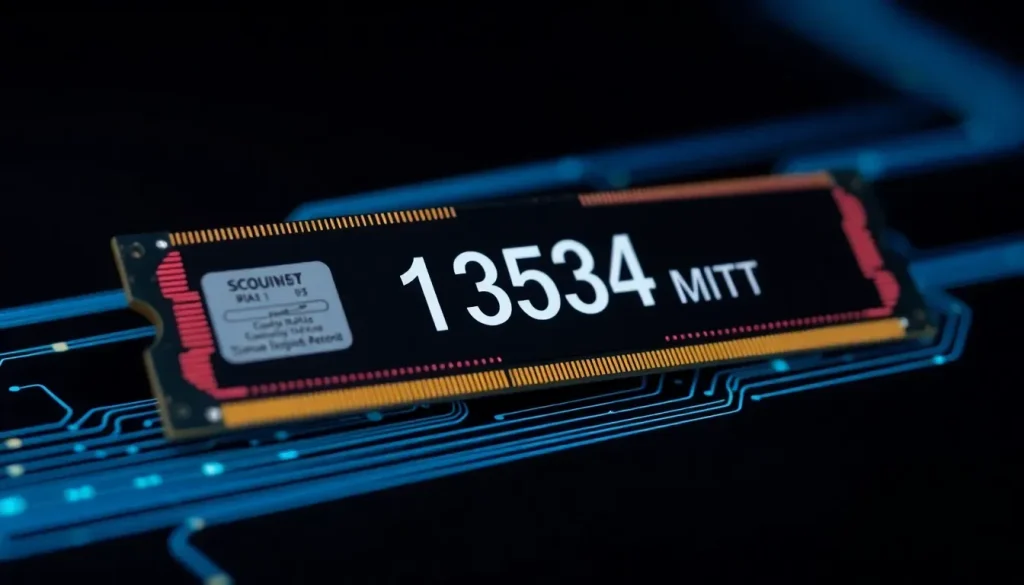World Record for RAM Frequency Reached at 13153 MT/s

In the ever-evolving world of computer hardware, the quest for faster RAM frequencies is a captivating journey that continues to push the boundaries of technology. Recently, the overclocking community witnessed a significant milestone that highlights this relentless pursuit. With cutting-edge techniques and state-of-the-art equipment, enthusiasts are breaking records that were once thought to be insurmountable.
The latest achievement not only showcases technical prowess but also reflects the passion and dedication of those who participate in this competitive landscape. Let's dive deeper into this remarkable accomplishment and explore what it means for the future of computer performance.
The new record: 13,153 MT/s in RAM frequency
Just days after HiCookie set a record with a RAM frequency of 13,034 MT/s, a new contender has taken the lead. The overclocker known as saltycroissant has shattered this record with a staggering speed of 13,153 MT/s. This impressive feat not only marks a new high in RAM performance but also highlights the ongoing advancements in technology and engineering.
Understanding the configuration behind the record
The configuration used to achieve this remarkable frequency is critical to understanding the factors that contributed to this success. Here are the primary components involved:
- Motherboard: A Gigabyte Z890 Aorus Tachyon Ice, specifically designed for extreme overclocking.
- Processor: An Intel Core Ultra 7 265K, which was downclocked to 2034.1 MHz using a x20 multiplier.
- RAM: A single stick of Corsair DDR5 memory, running at the record-breaking speed.
This combination of high-quality components plays a significant role in achieving such impressive RAM speeds. The Z890 Aorus Tachyon Ice motherboard has proven to be a favorite among overclockers, as it has facilitated the top four memory frequency records.
The significance of RAM timings
Along with frequency, the timings of the RAM are crucial for performance. In this record-setting attempt, the RAM timings were set at 68-127-127-127 with a command rate of CR2T and a ratio of 3:194. These specifications are essential as they determine how effectively the memory communicates with the processor.
In the realm of overclocking, understanding and optimizing RAM timings can be as critical as achieving higher frequencies. Faster timings can lead to improved bandwidth and overall system responsiveness.
The cooling solution: Liquid nitrogen
To achieve such extreme speeds, effective cooling is paramount. Saltycroissant utilized liquid nitrogen to cool both the CPU and the RAM to a chilling -196°C. This method not only prevents overheating but also allows for more stable and reliable performance at higher frequencies.
Liquid nitrogen cooling is a common technique among serious overclockers, enabling them to push their hardware to the limits. Here are some benefits of using liquid nitrogen:
- Prevents thermal throttling: Keeping components at extremely low temperatures allows for continuous high performance without overheating.
- Increased stability: Lower temperatures can lead to more stable overclocking results, reducing the likelihood of crashes or system failures.
- Extended hardware lifespan: While not a long-term cooling solution, using liquid nitrogen can prevent immediate damage from overheating during record-setting attempts.
Celebrating the achievement
This remarkable accomplishment not only grants saltycroissant a top spot in the overclocking rankings but also sets a new benchmark for enthusiasts around the world. Such achievements inspire countless others to explore the limits of their hardware and experiment with new configurations and cooling methods.
For those interested in following the latest developments in the world of overclocking, platforms like HWBot provide up-to-date rankings and submission details. They serve as a valuable resource for both seasoned overclockers and newcomers alike.
For a closer look at the techniques and strategies used by top overclockers, check out this insightful video:
The future of RAM and overclocking
As technology continues to advance, we can expect even more impressive feats in RAM frequency and overall computer performance. Here are some trends and predictions for the future:
- DDR6 and beyond: The development of new RAM standards will likely provide opportunities for even higher frequencies and improved performance.
- Enhanced cooling solutions: Innovations in cooling technology will enable overclockers to reach unprecedented speeds without compromising component integrity.
- More accessible overclocking: Advances in BIOS and motherboard technology will make it easier for novice users to safely overclock their systems.
In summary, the achievement of reaching 13,153 MT/s in RAM frequency is a testament to the ingenuity and determination of the overclocking community. As technology progresses, the possibilities are endless, making this an exciting time for enthusiasts and professionals alike.




Leave a Reply